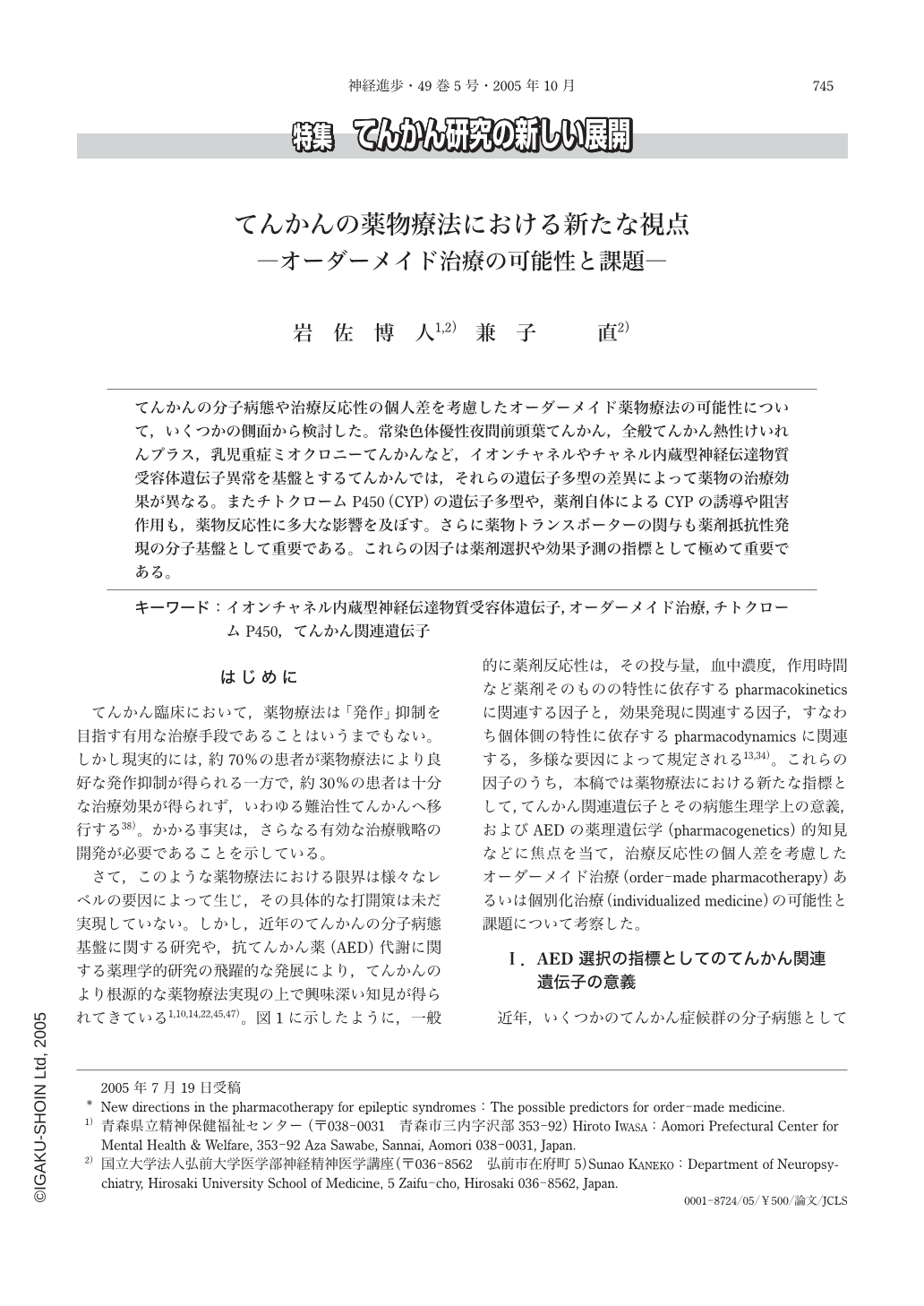Japanese
English
- 有料閲覧
- Abstract 文献概要
- 1ページ目 Look Inside
てんかんの分子病態や治療反応性の個人差を考慮したオーダーメイド薬物療法の可能性について,いくつかの側面から検討した。常染色体優性夜間前頭葉てんかん,全般てんかん熱性けいれんプラス,乳児重症ミオクロニーてんかんなど,イオンチャネルやチャネル内蔵型神経伝達物質受容体遺伝子異常を基盤とするてんかんでは,それらの遺伝子多型の差異によって薬物の治療効果が異なる。またチトクロームP450(CYP)の遺伝子多型や,薬剤自体によるCYPの誘導や阻害作用も,薬物反応性に多大な影響を及ぼす。さらに薬物トランスポーターの関与も薬剤抵抗性発現の分子基盤として重要である。これらの因子は薬剤選択や効果予測の指標として極めて重要である。
Despite the recent development of antiepileptic drug(AED)therapy, a significant number of patients with epilepsy are not free from seizures. Selection of drug treatment in patients with epilepsy is still based upon trial-and-error strategies. Pharmacogenetic research tries to identify possible genetic factors that determine clinical responce and to predict clinical outcome even before starting the AED therapy.
Genetic defects have been identified in some epileptic syndromes, such as autosomal dominant nocturnal frontal lobe epilepsy(ADFFLE), generalized epilepsy febrile seizure plus(GEFS+), and severe myoclonic epilepsy in infancy(SMEI). Current evidences in genetic studies illustrate that pathogenesis of these epileptic syndromes are supposed to as a channelopathy. Dysfunctions in the site of action of AED including ion channels may influence the individual's response to treatment. Two mutations(CHRNA4, CHRNB2)have been identified in ADNFLE patients. Among them, those carrying V287 M(CHRNB2), S248F(CHRNA4), 776ins3(CHRNA4)can be treated with carbamazepine(CBZ). However, those carrying the remaining CHRNA4 mutations(S252L, T265I)are resistant to CBZ treatment. Missense mutations coding for Na+ channels(SCN1B, SCN1A, SCN2A)and that for GABAA receptor(GABRG2:K289 M)have been identified in GEFS+patients. Patients carrying missense mutations found in these epilepsy phenotypes do not show pharmacoresistance. However, SCN1A and GABRG2 mutations found in SMEI patients, including many truncation mutations, appeared to be drug-resistant. The reason why mutations found in SMEI, some of witch are also identified in GEFS+patients, do not respond to most AEDs is still unclear.
Alterations in genes coding for CYP isozymes such as CYP9, CYP19, and CYP3A4 and multi-drug tranportors(ex:MDR1)have been related to some toxic reactions of AEDs and determining of drug resistance. Pre-treatment characterization of a patient's metabolic status will allow the adjustment of AED doses and/or the selection of alternative AEDs. Implementation of routine screening for CYP isozymes and receptor polymorphisms(or mutations)in clinical laboratories will provide evidence-based prediction of clinical response and help to select the AED most likely produce beneficial effects with minimal risks according to their genetic. This pharmcogenetic strategy constitutes the basis of personalized pharmacotherapy for epileptic syndromes.
Further studies to delineate the individual variability of genetic predictors will provide quite valuable guides for the order-made pharmacotherapy and will promote enhanced success in the AED treatment of epilepsy. At the same time, determination of the molecular basis of epileptogenesis and drug resistance would allow the identification of new strategies to prevent the development of refractory epilepsy.

Copyright © 2005, Igaku-Shoin Ltd. All rights reserved.


